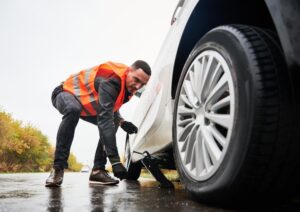Have you ever experienced the situation of accidentally hitting something or someone while reversing your car? If so you’re not alone. According to the National Highway Traffic Safety Administration (NHTSA) there are over 200 fatalities and 12,000 injuries each year due to accidents. These incidents occur when a driver unintentionally reverses into a person or object positioned behind their vehicle. Sadly the majority of these victims are. Young children under the age of 5 or elderly individuals above 70 years old.
To mitigate tragic occurrences the NHTSA has introduced a regulation mandating all newly manufactured vehicles weighing less than 10,000 pounds to be equipped with rearview video systems, commonly known as backup cameras by May 2018. As a result every car, truck, SUV and minivan sold within the United States will now come standard with this safety feature. In this article we will provide an explanation of what backup camerasre how they function and why they play a crucial role, in ensuring your safety and convenience.
What are backup cameras?

Backup cameras are really tools for drivers when they need to reverse their vehicles. These cameras are set up at the back of the vehicle. Have a display screen either on the dashboard or the rearview mirror. They capture a wide angle view of whats behind your vehicle and show it on the screen as a video feed. To make things even easier some screens even provide guidelines or markers to assist with aligning your vehicle and estimating distances from obstacles.
How do backup cameras work?
Backup cameras operate through either a wireless connection linking the camera to the screen. In the case of a connection video signals are transmitted from the camera to the screen using cables. On the other hand wireless connections rely on radio waves or Bluetooth to transmit video signals from the camera to the screen.
When a driver shifts their vehicle into reverse it triggers the activation of the camera. Subsequently the screen automatically switches to camera mode displaying live video feed captured by the camera. This allows drivers to utilize the screen as a guide while reversing their vehicle safely and preventing any potential collisions with objects or individuals behind them.
Why are backup cameras important?
Having backup cameras installed in vehicles holds importance due to various reasons. Firstly they play a role in enhancing safety by minimizing blind spots and improving rear visibility. Blind spots refer to the areas that cannot be seen through rearview mirrors or by looking over the shoulder. These blind spots can extend up to 15-25 feet behind cars and even up to 50 feet behind large trucks or SUVs. By utilizing backup cameras drivers can eliminate these spots and gain a comprehensive view of everything situated behind their vehicle, including pedestrians, animals, bicycles, toys or other vehicles.
Secondly backup cameras are instrumental in preventing accidents and reducing repair costs. Accidentally backing up into an object. A person can result in significant damage, to both the vehicle and the impacted item or individual. This can lead to repairs, medical bills, lawsuits or insurance claims. However with the aid of backup cameras drivers can avoid collisions altogether and save money on potential expenses.
Lastly these cameras provide added convenience and comfort by simplifying parking and maneuvering tasks. Many drivers find reversing their vehicles stressful and challenging— in tight spaces or congested areas. By offering a view of what lies behind them while parking or maneuvering their vehicle backup cameras empower drivers with increased confidence and precision.
Overall installing backup cameras not enhances safety but also prevents accidents while providing convenience during parking and maneuvering situations.
They can also assist drivers in saving time by minimizing the necessity of exiting the vehicle to inspect the surroundings.
Conclusion
Rearview cameras are devices that allow drivers to have a clear view of what’s behind their vehicle while reversing. They consist of a camera mounted at the back of the vehicle and a display screen, on either the dashboard or the rearview mirror. These cameras work by establishing a connection either wired or wireless between the camera and the screen.
Having backup cameras is crucial as they greatly enhance safety, minimize damages and offer added convenience. They effectively eliminate spots, improve visibility, prevent collisions, save money, simplify parking procedures and help save time. Starting from May 2018 all new vehicles sold in the United States will come equipped with backup cameras as a feature. This significant development aims to make driving more effortless for everyone involved.




